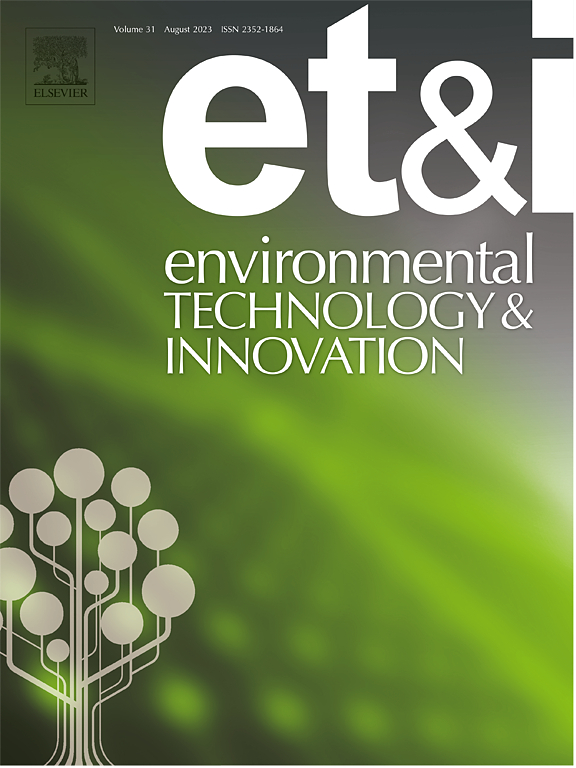综合工艺设计、技术经济和环境分析:乙醇提取酚类化合物还是能源生产?
IF 6.7
2区 环境科学与生态学
Q1 BIOTECHNOLOGY & APPLIED MICROBIOLOGY
引用次数: 0
摘要
学习如何转化食品工业的副产品或废物,而不是把它们直接送到垃圾填埋场,是减少食品浪费和从中获得新的增值产品的关键。本研究对在多产品和循环生物精炼厂中提取酚类化合物的蔓越莓渣进行了环境和经济评估。为此,分析了两种方案:方案A,渣渣的剩余部分用于获得生物乙醇和富含木质素的废水;情景B,它被用于生物能源生产。生命周期评估方法用于确定环境临界点,遵循从摇篮到大门的方法,并考虑诸如全球变暖、淡水富营养化或化石资源稀缺等影响类别。结果表明,与情景a相比,情景B在分析的所有影响类别中表现更好。在这两种情况下,主要热点是生物炼制所需蒸汽的产生,其次是农业阶段的排放和工厂对化学品的需求。此外,本文提出了技术经济分析,以评估两种方案的经济可行性,并考虑总资本投资、运营成本和净现值或内部收益率等指标,进行敏感性分析,以确定平台的盈利因素。结果表明,所分析的方案在所研究的任何规模上都不盈利,需要优化产量或降低工厂的运营成本。本文章由计算机程序翻译,如有差异,请以英文原文为准。
Integrated process design, techno-economic and environmental analysis of chokeberry pomace biorefineries: Phenolic compounds extraction with ethanol or energy production?
Learning how to transform by-products or waste from the food industry instead of sending them directly to landfill is key to reducing food waste and obtaining new value-added products from them. This study carries out the environmental and economic assessment of the valorisation of chokeberry pomace for the extraction of phenolic compounds in a multi-product and circular biorefinery. For this purpose, two scenarios were analysed: scenario A, the remaining part of the pomace is used to obtain bioethanol and a lignin-rich stream; and scenario B, it is used for bioenergy production. The Life Cycle Assessment methodology is used to determine the environmental critical points, following a cradle-to-gate approach and considering impact categories such as Global Warming, Freshwater Eutrophication or Fossil Resource Scarcity, among others. The results show that scenario B performs better in all the impact categories analysed compared to scenario A. In both cases the main hotspot is the generation of the steam needed in the biorefinery, followed by the emissions in the agricultural stage and the demand for chemicals in the plant. Furthermore, this document presents a techno-economic analysis to assess the economic feasibility of both scenarios and a sensitivity analysis to determine the profitability factors of the platform, considering the total capital investment, operating costs and indicators such as Net Present Value or Internal Rate of Return. The results show that the scenario analysed is not profitable at any of the scales studied, requiring to optimise the production yield or a reduction in the plant's operating costs.
求助全文
通过发布文献求助,成功后即可免费获取论文全文。
去求助
来源期刊

Environmental Technology & Innovation
Environmental Science-General Environmental Science
CiteScore
14.00
自引率
4.20%
发文量
435
审稿时长
74 days
期刊介绍:
Environmental Technology & Innovation adopts a challenge-oriented approach to solutions by integrating natural sciences to promote a sustainable future. The journal aims to foster the creation and development of innovative products, technologies, and ideas that enhance the environment, with impacts across soil, air, water, and food in rural and urban areas.
As a platform for disseminating scientific evidence for environmental protection and sustainable development, the journal emphasizes fundamental science, methodologies, tools, techniques, and policy considerations. It emphasizes the importance of science and technology in environmental benefits, including smarter, cleaner technologies for environmental protection, more efficient resource processing methods, and the evidence supporting their effectiveness.
 求助内容:
求助内容: 应助结果提醒方式:
应助结果提醒方式:


